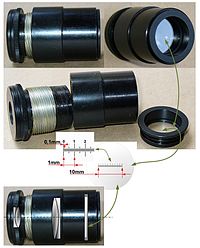To ensure having accurate and
precise result,it is important for microbiologists to minimize the error due to
external source such as air borne microorganisms.Although human body may look
clean with naked eye,however,it is colonized by countless amount of
microorganisms.Some microorganism is benefit to us while a minority is
hazardous to human health.In moist area e.g:leg after wearing hours of stocking
is an incubator for various smell-causing microorganism.In normal
circumstances,our body is protected from those residential microorganisms by
the mean of physical deffence and immune response.However,when the physical
barrier is broken e.g:wound on skin,microorganisms are prone to causing local
infection.Transient microorganism which is non-original resident are usually
fail to become permanent resident in a new environment.This is due to they are
not well adapted to the new environment compared with those local microorganism,hence
they are outcompeted compared with those local resident.Thus,introduced
microorganism normally only resides for a short time in new
environment.Microorganism in upper repiratory tract are either normal residents
or transients.As with the skin,the normal microflora largely consists of
non-pathogenic or opportunistic pathogenic microorganism.As we breath,a
considerable amount of transient microorganism are trapped.However,they are
quickly eliminated via our body highly efficieint defense mechanism in no time.
Objective:
To prepare sterile nutrient agar for
culturing microorganisms.
Materials and Reagents:
Commercial nutrient agar
Electonic balance
Distilled water and measuring
cylinder
Scott bottles
Spoon
Weighing
dishes
Methods and procedures:
1.The commercial nutrient agar and other nutrient powders were weighed by using analytical/electronic balance and then it was put into the beaker.




2. 250 ml of
distilled water was measured by measuring cylinder.

3.The measured distilled water was added/poured into the beaker which contain nutrient powders.

3.The measured distilled water was added/poured into the beaker which contain nutrient powders.
4. The mixture of nutrient powder and distilled water were mixed/stirred by using glass rod.
5. The mixture was poured and added up in scott bottle.
6. The steriled water is prepared by using measuring clylinder to fill up 50ml of distilled water and then poured it into a scott bottle.
7. The scott
bottles was labelled as commercial nutrient medium or self prepared medium.
9. Then, all media was sterilized at 121˚C for 15 minutes by using autoclave.
Discussion:
Culture medium
is a synthetic medium which is filled with nutrients necessary to the
growth of microorganisms or cells being cultured in the lab. The medium may be
solidified by the addition of agar.
There are
precautions that we need to take when we prepare the culture media. When we weighing the powder, the weighing area door
opened as little as possible and one's hand could not be inserted into the
weighing area when using analytical balance. We needed to clean the pan of the
balance before using it to avoid the dirt from affecting our reading. Besides
that, we measured the volume of the distilled water by using measuring cylinder
in order to get accurate reading of the water. We did not pour all water
into when mixing with the powder to let us to rinse the leftover powder with
the water reserved. Distilled water was used instead of tap water to avoid the
contamination of the culture media occur. We used glass rod to make sure the
powder dissolved completely into the solution. We marked the Scott bottles
according to the solution inside of them with marker pen to avoid confusion of
the name.
We used autoclave to
sterilize equipment and supplies by subjecting them to high pressure
saturated steam at 121 °C for around 15–20 minutes. We had loosely
recapped the bottles and set aside for sterilization to avoid the bottle from
explode or suddenly opening the bottle would drop the pressure, causing the
liquid inside to flash boil and spray out from happening. The drain screen was check at the bottom of the
chamber before using the autoclave. Any debris was cleaned out. We
needed to ensure the door was securely locked to enable a tight seal and avoid burns from the release of steam. The container was filled half full. When the
autoclave cycle finished, we waited for the
pressure gauge to drop to zero with zero time remaining before opening the
door. The door was cautiously opened. We had to stand behind the
door and slowly opened it and allow all steam to escape before reaching inside.
We allowed the liquids stand another 10–20 minutes after the autoclave was opened
to avoid any movement that could cause them to boil. The items were carefully
removed. The cap of each Scott bottle was tightened. Finally, our media were
successfully prepared. The media will be used for next laboratory.
Conclusion :
For culturing microorganisms, a
sterilized nutrients agar is prepared. Culture medium is prepared with correct
quantities of ingredients. Autoclaving, a process of sterilization by pressure
and moist heat to disinfect materials, is the most effective way of
sterilization. The media is prepared successfully.
References :





























